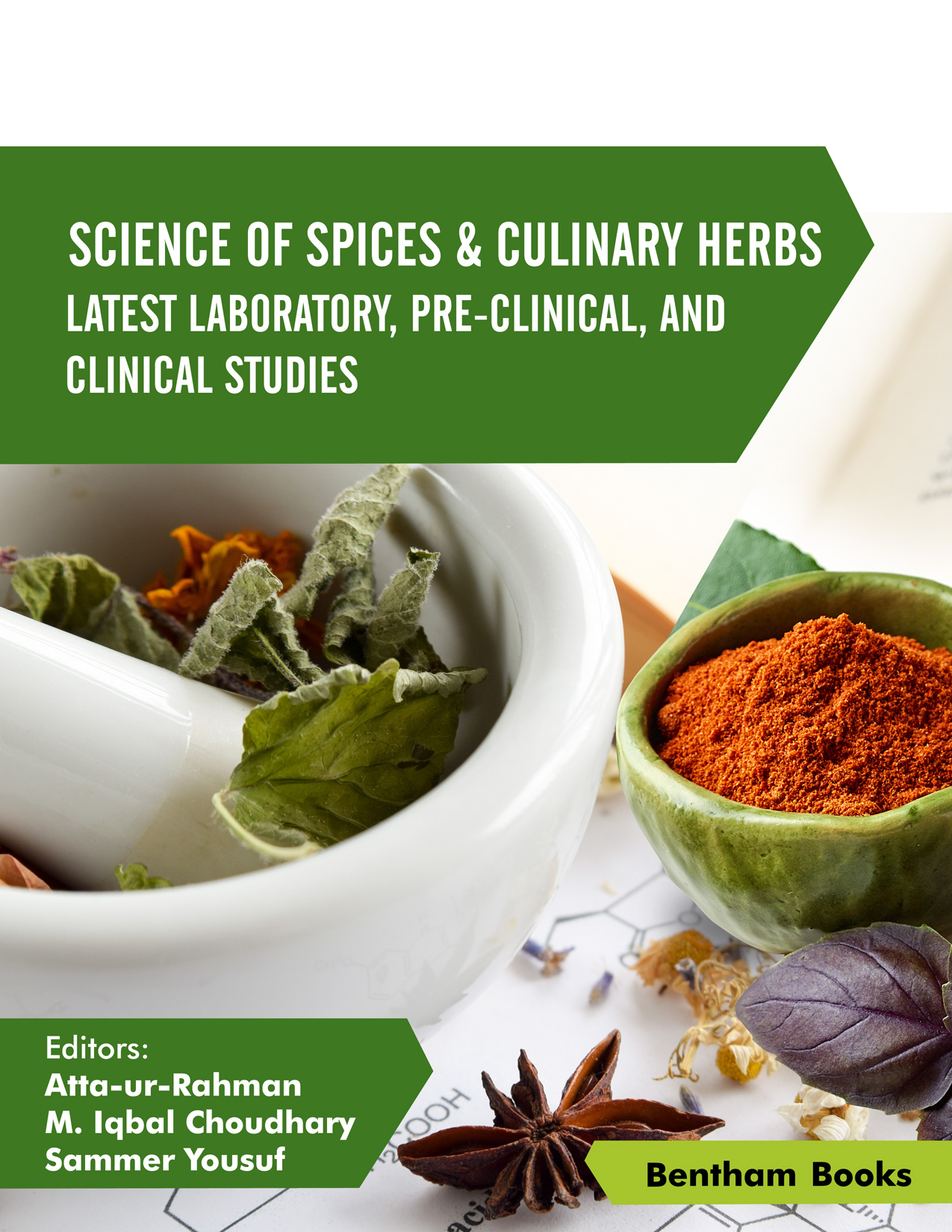Spices and culinary herbs have been used as food and medicine since antiquity. Their use in traditional medicines is well documented. The field of research on spices, as health promoting and disease preventing materials, received a new impetus with the scientific work on turmeric as a source of anti-inflammatory, anti-arthritic, anticancer and antioxidant compounds. Since then tremendous studies have been conducted to decipher the science behind the therapeutic and nutritional properties of spices and culinary herbs. The world literature on phytochemistry, pharmacology, preclinical and clinical trials on health foods and spices is fast growing, creating the need for comprehensive reviews with critical analysis of the available data. The 5th volume of the book series “Science of Spices & Culinary Herbs” is a compilation of several such reviews, contributed by leading experts in the field.
The review by Shah et al is focused on the recent literature on ethnomedicinal uses, unique chemistry and a range of pharmacological properties of the versatile spice clove, Syzygium aromaticum. Clove is famous for its essential oils, and it is widely used and tested for its antifungal, nematicidal, antitumor, anti-inflammatory, anesthetic, pain relieving and insecticidal properties, to name a few. Age old Black Cumin (Nigella sativa) seeds have attracted major scientific interest in recent years due to its novel secondary metabolites, such as thymoquinone, nigellidine, and nigellicine, and for their therapeutic properties. Akaberi et al have reviewed the results of various clinical trials on black cumin seeds and its oil for treatment of infertility, cancer, asthma, non-alcoholic fatty liver diseases and rheumatoid arthritis, as well as for the chemistry, and pharmacology of this important spice. Dar et al have contributed a review on pharmacological and clinical studies on Mint or Indian “Podina”, Mentha arvensis in the context of its nutritional, ethnomedicinal, phytochemical, and biological properties, such as antimicrobial, anti-oxidant, antifertility, TNF-alpha inhibition, and neuroprotective, etc. They have also presented results of clinical studies on the efficacy of Mentha extract preventing chemotherapy induced nausea and vomiting, and in the management of somatic and psychological symptoms of premenstrual syndrome. Rabinarayan Acharya has contributed a review on the use of Zingiber officinale (Ginger) as an essential constituent of Ayurvedic medicines in India. The author has provided a critical review of nutritional and phytochemical properties, as well as clinical evaluation of Ginger extract, and its phytoconstituents for the treatment of post-operative nausea and vomiting, excessive menstural bleeding and dysmenorrhea, diabetes, rheumatic disorders, etc. The article of Tosya and Bolek focuses on nutritional importance, chemical constituents and mechanisms of action of one of the most important spices, cinnamon (Cinnamomum verum) bark. They have also discussed the use of cinnamon as a food ingredient, and the changes it causes in the structures of various foods. Sumac (Rhus coriar) is a common spice, also known for health benefits. Ceyda S. Kilic present a review on primary and secondary metabolites of Sumac, its reported antioxidants and its anticancer properties.
We would like to express our thanks to all the authors of the above cited review articles for their excellent contributions in this dynamic and exciting field of biomedical and pharmaceutical research. The efforts of the efficient team of Bentham Science Publishers, particularly Mrs. Fariya Zulfiqar (Manager Publications), and Mr. Mahmood Alam (Editorial Director) for the timely production of the 5th volume deserve our appreciation.
Atta-ur-Rahman, FRS
Kings College
University of Cambridge
Cambridge
UK
M. Iqbal Choudhary & Sammer Yousuf
H.E.J. Research Institute of Chemistry
International Center for Chemical and Biological Sciences
University of Karachi
Karachi, Pakistan

